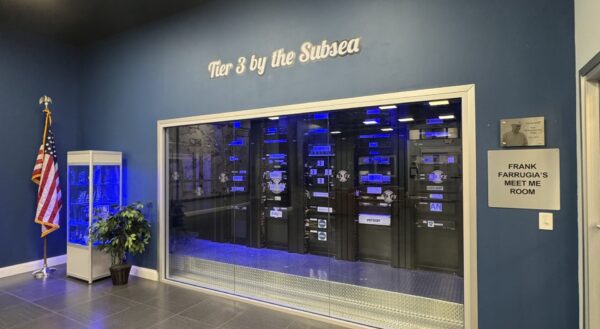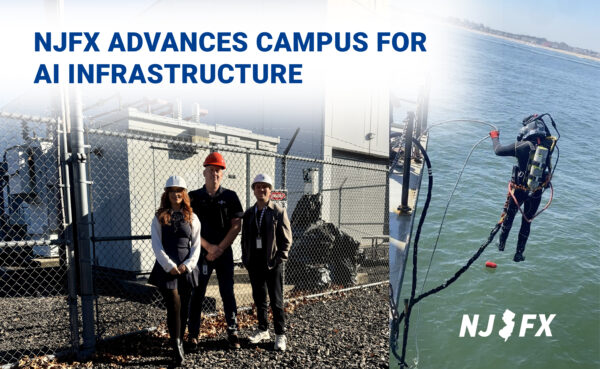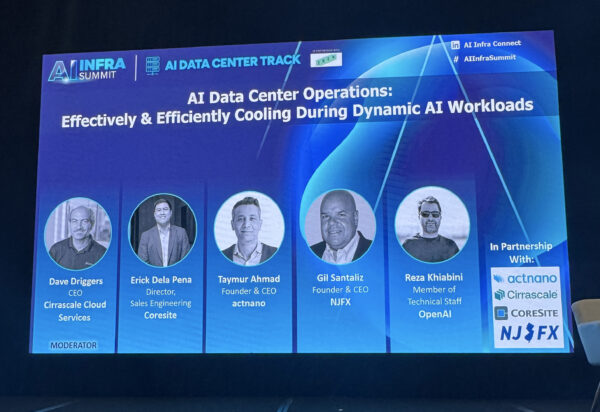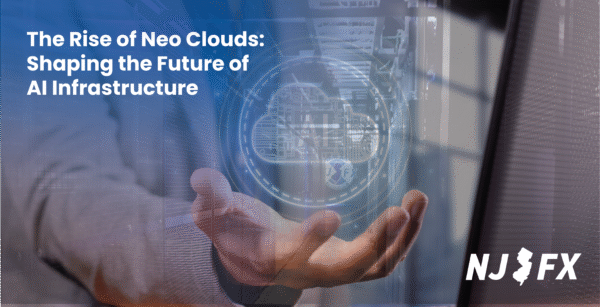Data Centers Powering the Future
An NJFX Article
Dec 3, 2024
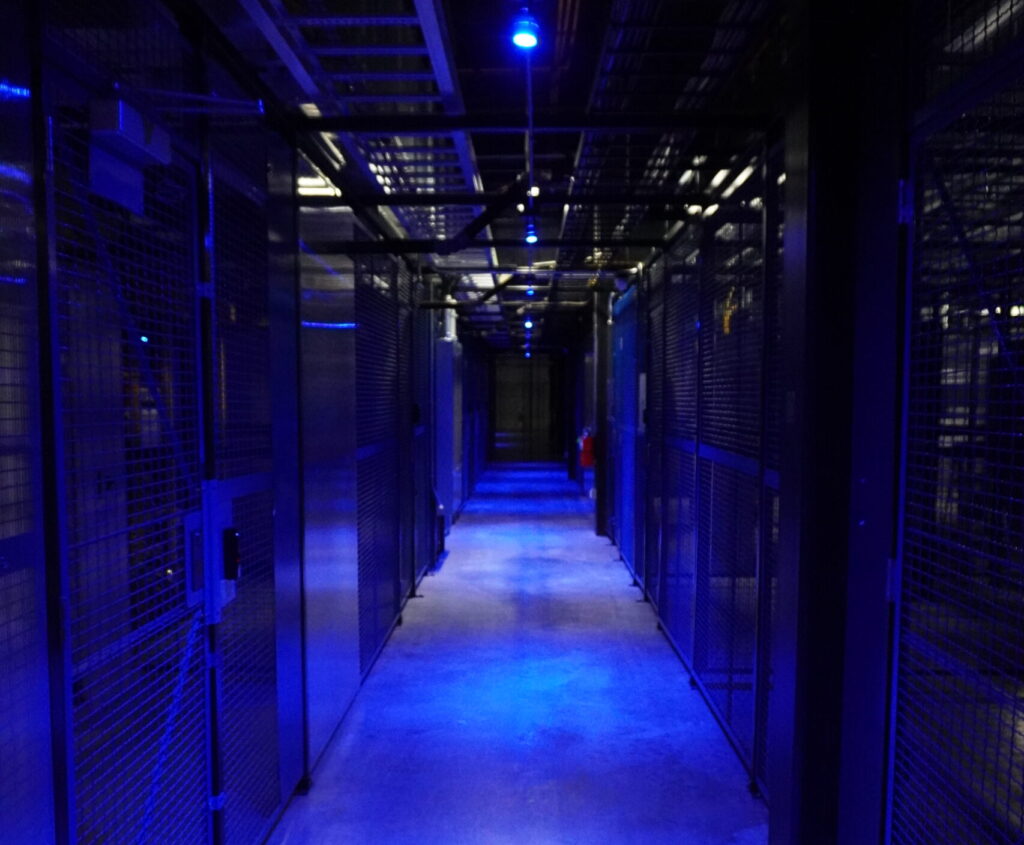
The rapid expansion of data center capacity and the growing demands of AI were at the forefront of a recent executive panel discussion that brought together leaders from NVIDIA, CBRE, Supermicro, EXA Infrastructure, Bulk and NJFX. The panel explored critical issues shaping the industry now with AI’s transformative impact to emerging energy solutions for powering future infrastructure.
Stuart Dyer, First VP-Data Center Advisory at CBRE, outlined the unprecedented growth of data center capacity, driven by hyperscalers like AWS, Microsoft, and Google. By 2026, Northern Virginia alone will account for nearly a gigawatt of capacity, with over 75% pre-leased. The vacancy rate across North America remains a mere 1% underscoring the intense race for power and space.
In Europe, secondary markets such as the Nordics are emerging as key players, thanks to their focus on green energy. With the AI boom accelerating, these regions are becoming hotbeds for hyperscale tenants seeking sustainable and scalable solutions.
AI’s Influence on Data Center Design
Malcolm deMayo, VP Global Financial Services Trusted Advisor at NVIDIA, highlighted the critical role of data centers in supporting AI applications, such as weather prediction and insurance modeling. With Nvidia commanding 88% of the AI market, the need for low latency and efficient connectivity is paramount. The discussion emphasized the importance of subsea cables and scalable networks to support the ever-growing data transfer demands of AI inference and training.
Liquid cooling emerged as a key innovation for managing high-power density racks, with Super Micro showcasing advanced solutions like cold plates and liquid-cooled racks. These technologies not only enhance performance but also significantly reduce power consumption.
Advanced Cooling Solutions
Michael Watson, Senior Director, field Application Engineer at Super Micro, highlighted the company’s global presence and leadership in liquid cooling solutions for high-performance computing and AI. He outlined the challenges of managing heat in modern computing systems, emphasizing the need for innovative approaches to meet the demands of increasingly dense workloads.
Watson detailed SuperMicro’s advanced product portfolio, including cold plates, cooling distribution units, and liquid-cooled racks, all designed to optimize cooling efficiency. These solutions significantly reduce power consumption while boosting performance, making them essential for AI-driven environments. Watson underscored the transformative impact of liquid cooling on the data center industry, offering scalable, efficient systems to support the growing demands of high-density AI workloads.
A Path to Sustainability
The conversation shifted to the future of power generation, with Hunter Newby addressing the pressing need for alternative energy solutions. Small cell nuclear reactors were identified as a potential game-changer, offering scalable and localized power sources for data centers. However, the 5-10 year timeline for regulatory approval poses challenges.
Panelists critiqued the inefficiencies of utility-based power systems, which often struggle with supply chain delays and outdated infrastructure. Hyperscalers like Google were urged to consider building their own power plants to bypass regulatory bottlenecks and meet immediate energy demands.
Kristian Kofoed-Solheim of Bulk Infrastructure highlighted Norway’s green energy advantage, leveraging hydropower to fuel sustainable data center operations. With key points discussing the Havfrue cable, the only cable connecting the United States to the Nordics providing access to these power sources. His remarks underscored Europe’s shifting stance on nuclear power and the growing reliance on renewable energy.
AI’s Impact on Network Design
Charles Thomas, VP Sales Engineer from EXA Infrastructure, highlighted the growing demand for high-bandwidth connectivity to support AI workloads. He outlined challenges in managing existing subsea systems and emphasized the need for software-defined networking to extend network capacity. Collaboration with partners and innovation in subsea systems are critical for handling the surge in data transfer demands fueled by AI.
Thomas also discussed the role of government funding in infrastructure projects, which can accelerate innovation. He emphasized how partnerships between private companies and public entities are essential for building and operating scalable data center solutions.
AI, Connectivity, and Partnerships
Gil Santaliz emphasized NJFX’s pivotal role as North America’s first carrier-neutral cable landing station, crucial for interconnecting continents and supporting AI applications. He highlighted NJFX’s infrastructure, which supports high-density data centers and seamless subsea cable connectivity essential for AI’s low-latency and high-bandwidth needs.
Santaliz pointed out the inefficiencies in traditional utility systems, such as equipment delays and domestic manufacturing constraints. He proposed nuclear power as a solution for data centers to bypass these utility challenges and achieve scalable energy generation.
Additionally, he discussed the complexities of water management in data centers with liquid cooling systems. NJFX’s flexible design accommodates advanced cooling technologies, meeting the increasing demand for AI and high-performance computing. Santaliz concluded by stressing NJFX’s commitment to adapting infrastructure for the evolving needs of AI-driven industries, ensuring efficiency and scalability.
Key Takeaways
- AI Drives Growth: Hyperscalers and Fortune 1000 companies are accelerating demand for data center capacity to support AI workloads.
- Energy Innovation is Critical: The transition to small cell nuclear reactors and green energy solutions is vital for scalable, sustainable growth.
- Connectivity Matters: Low latency and high-bandwidth networks, powered by subsea cables, are essential for AI inference and real-time applications.
- Collaboration Fuels Progress: Partnerships across the industry are driving innovation and addressing challenges in infrastructure and energy.
As the data center industry evolves, leaders must embrace innovative technologies and sustainable energy solutions to power the future of AI and digital infrastructure. This session offered a glimpse into the strategies and partnerships shaping the road ahead.
Want to learn how you can Expand your Network to New Heights
Reach out and talk to an expert today

